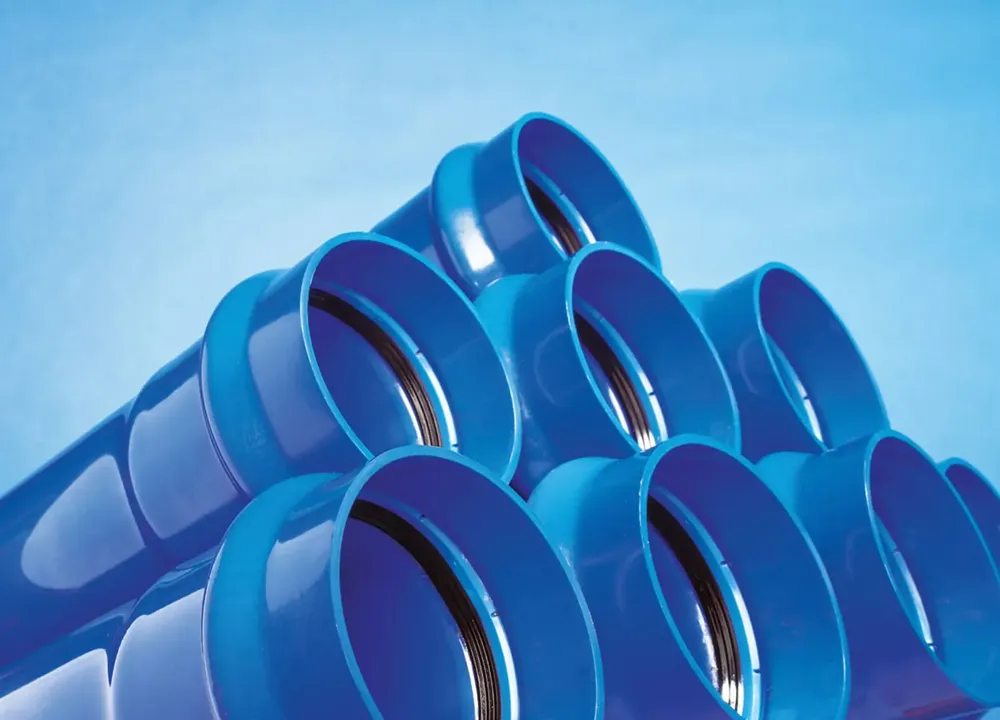

Wavin builds world-class e-commerce capabilities with Contentstack
A legacy technology stack and CMS restricted Wavin's growth and its ability to build a world-class e-commerce capability.

As examples of “traditional” B2B industries, infrastructure and construction have been slow to adopt the possibilities around digital transformation. This has left a clear space for Wavin to innovate and deliver services to its global client base. However, this was frustrating for Wavin due to the limitations of its legacy technology stack that was expensive and time-consuming to upgrade. This was most evident in that while Wavin had both a global website and communication platform, it lacked any e-commerce capabilities.
The challenge
However, after the COVID-19 pandemic, a Wavin facility in the Netherlands that manufactures plastic face masks realized there was potential to sell direct to consumers. As a result, the company quickly developed a strategy to create a customer-centric online “web shop.”
Wavin then called in Contentstack partner Valtech to manage the implementation and processes around delivering this new capability. The success and performance of this operation sparked Wavin's interest in the possibilities of e-commerce.
Exploiting opportunities for change
At this point Wavin realized it needed a substantial overhaul of its online capabilities and the infrastructure that supported them. A critical part of this was to re-evaluate and replace the monolithic, legacy content management system (CMS) that frustrated the ability to move into new markets. Using a MACH-based approach because of the modular and scalable capabilities, Wavin turned once again to Valtech to compile options for a headless CMS.
“Previously we had gone for a best-of-suite approach but found that this limited our functionality and the reach of our digital ambition," said Stephanie Devine, global product owner for e-commerce at Wavin. "If we were to realize that ambition, we knew that pieces of our existing infrastructure required huge change, but the architecture prevented that. It was like a Jenga tower, where we could not update or change one part without the risk that the entire stack would collapse."
The solution
“We were also driven towards a MACH approach by the digital experience talent we had hired from leading e-commerce players," Devine said. "In a traditional and risk-averse industry, we made a bold decision to embrace MACH and go beyond the suite approach, trusting the API interaction to give us the freedom to choose what is needed to build a stack that can grow with Wavin.”
As part of this new infrastructure, Valtech specified three potential headless CMS systems. After a thorough review of the options presented by these platforms, Contentstack was chosen based on the interface and ease of use for content editors and the speed of development it enabled.
“Our selection process was akin to a series of mini evaluations," Devine said. "We had little in the way of prescriptive targets but instead used small, initial licenses to support the experimentation across our pilot markets. It was soon obvious that Contentstack offered not only more functionality but also enabled a faster, more agile way of working that would help us enter markets quickly.”
Building upon early success
The headless CMS project began with a pilot phase across three geographies: the new market of Indonesia, alongside India and the Czech Republic. Wavin saw early, positive results that proved the concept and following this success, rolled out Contentstack to 36 countries, with 23 of those completed between September 2021 and March 2022.
Despite the traditional outlook of the industry that can often frustrate the implementation of modern technology, Wavin has seen strong uptake of the Contentstack system, and there have been a number of improvements. Based on the new development model, each country has parameters to localize centralized content and apply it to local markets. This has already accelerated both the acquisition and onboarding of customers — as well as enabling Wavin to iterate and evolve campaigns more quickly.
Better content has also contributed to improvements in the accuracy and speed of orders. Orders that previously took 20 minutes to be processed are now managed in less than half that time. This has de-risked the entry into new geographies and led to substantial improvements in customer satisfaction.
Each country conducted an assessment of performance changes and followed this with a small number of qualitative feedback calls. This has revealed keen insights into preferences for different markets. For example, Turkey has seen the highest adoption of the new CMS platform (alongside the biggest increases in revenue).
The efficiency of the web shop and updated content capabilities have enabled account teams to develop relationships. They have done this by capitalizing on functionality such as visual references and previews within the system to ensure customers are confident in their choices. There are plans to extend this feedback program, assessing how valuable and impactful specific Contentstack functionality has been. Initial responses have shown that e-commerce is quickly becoming the preferred channel for smaller merchants, with a reliance on online content that makes accurate, relevant material a business-critical concern.
“We have been able to add technology into the existing relationships quite easily to improve the service delivered, as well as make Wavin more attractive in new markets," Devine said. From static requirements such as the translations of labels or text, to the creation of personalized account summaries that include orders, pricing and design visualizations, we have been able to develop strong e-commerce capabilities to support our customers and make it easy to do business with Wavin.
Looking to the future
As the presence of digital technologies in construction continues to grow, Wavin is set to expand on its use of Contentstack. The global rollout has been particularly successful in showing Wavin how it can extend beyond a purely European experience and learn from the diverse ways of working in regions such as APAC. This has fed into the development of materials for other markets, and Wavin is currently poised to make a substantial impact on Latin America. As an early mover into this market, there is a considerable opportunity for Wavin to be at the forefront of the digital evolution of construction throughout the region.
There is also a project underway to create a unified web shop and website in Contentstack, in an eight- to 12-month timeframe. This will include consistent landing pages and global governance, with centrally developed marketing campaign kits for local teams to adapt for a given market.
Other planned digital experience initiatives include expanding the Wavin training academies to include the growing investor audience. This will be achieved primarily by adding new digital materials. Throughout all these initiatives, Wavin remains committed to ensuring digital technologies help more sustainable and healthy environments, maximizing the value that can be delivered as it continues to develop into new markets.
The results
- Executed a 36-country rollout
- Drastically reduced order processing time
- Accelerated customer acquisition
- Gained better insight into market differences and quicker entry into new geographies
Customer Details
About
Headquartered in Amsterdam in the Netherlands, Wavin is a global infrastructure provider focused on the creation and management of sustainable environments. Its activities focus on providing universal access to sanitation and healthy, clean drinking water as well as improving the performance of buildings and the development of sustainable cities and urban environments.
From its beginnings as a manufacturer of plastic pipes in the 1950s to its current position within the Orbia group of companies, the Wavin ambition has been to leverage infrastructure solutions on a global scale to create positive change in the world and build “liveable and loveable places.” This has entailed expansion beyond the Netherlands, across Europe, then into South America and APAC.
Industry
Products
Partners on this project
Ready for more?
Contact an expert

.svg?format=pjpg&auto=webp)


.svg?format=pjpg&auto=webp)
.svg?format=pjpg&auto=webp)
.svg?format=pjpg&auto=webp)
.svg?format=pjpg&auto=webp)








